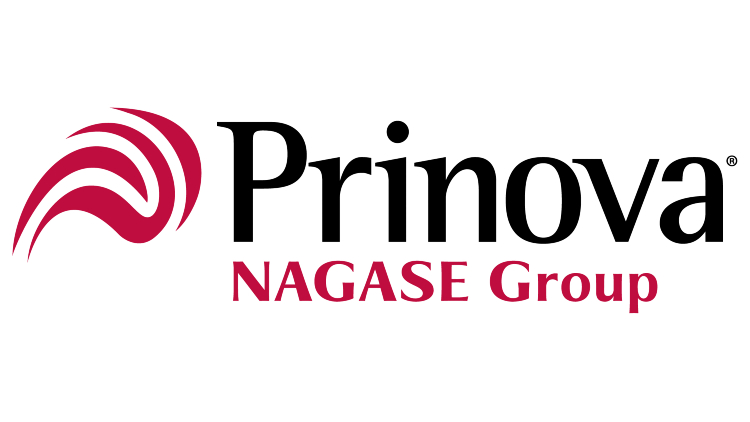Promotional Features
Competitive advantage: New insights into Europe’s evolving sports nutrition market
In 2020, a wave of lockdowns and gym closures left the sports nutrition market in an uncertain position.1
Today, however, the European sports nutrition market is performing well, anticipating significant growth of 8.4% CAGR (2022-2027).2 Ironically, the COVID-19 pandemic has played a key role in boosting consumer interest in healthier lifestyles and diet.3
Other contributing factors to this impressive turnaround include the widening of distribution channels from fitness centres and sports clubs into supermarkets, pharmacies and online; and the broadening of the user demographic from a niche of athletes and body-builders into the mainstream. However, mainstreaming brings its own challenges – notably a more fragmented market, with different consumer needs depending on age, gender, level of fitness, preferred activity and lifestyle.
In order to provide valuable insights into the complex ways sports nutrition use varies across Europe, Prinova commissioned a survey of 1,277 consumers in five of the region’s biggest markets – France, Germany, Italy, Spain and the UK.4 Respondents were all physically active (defined as exercising at least twice a week) and had consumed at least one sports nutrition product in the preceding 12 months.
Enduring appeal
The results highlighted significant variations across the five markets. In Germany and Spain, for example, endurance activities such as running or cycling were significantly more popular than strength training, while the opposite was true in the UK and Italy.
However, across all consumer groups, endurance and strength training were nearly five times more popular than team sports and over seven times more popular than individual sports, such as squash and tennis. Age also played a role, with 51% of 18-24-year-olds in all five countries engaging most frequently in strength training, while 75% of consumers aged 55 and over preferred endurance activities.
German consumers were less likely to exercise daily than those in the UK, France and Spain – with one in three Spanish consumers engaging in physical activity every day, compared to just one in seven in Italy. German respondents were also the most likely to use a sports nutrition product before or during exercise, and the least likely to use one post-exercise (with Italians the most likely).
Ingredients for success
Vitamins, minerals and plant proteins led the field of consumers’ preferred sports nutrition ingredients. From a list of 20 common ingredients, vitamins emerged as the most popular choice for 64% of consumers, followed by plant proteins and minerals – with the popularity of plant proteins highest in Spain and Germany, and minerals the top ingredient for Italians.
Ingredients not traditionally associated with sports nutrition also scored well. Fibre was popular with 16% of respondents, followed by omega-3 (14%), botanicals (14%), probiotics (9%) and oats (9%). Probiotics were particularly popular in the UK, along with oats in Spain and fibre in Italy, while German consumers were the least likely to be interested in any of these ingredients.
Prinova’s research reflects the increasing diversity of sports nutrition consumers and the growing body of scientific research into the benefits of non-traditional ingredients for sports nutrition. There is increasing awareness, for example, of vitamin C’s support for recovery and immune health, the role B vitamins can play in high-intensity exercise performance, and how minerals can offer benefits in areas such as hydration.5
The survey findings also make clear the impact of the plant-based trend on the sports nutrition market, which saw the number of launches with a plant-based claim grow by 26% between 2016 and 2020.5 Some 42% of consumers cited plant proteins as one of their top ingredients, compared to 26% who looked for whey or dairy protein, 15% who preferred egg protein and just 8% who sought out meat protein.
New goals
A definite split in motivations also emerged from the survey. As you might expect, given the dominance of endurance and strength training, the five top goals for sports nutrition use were energy (71%), post-exercise recovery (51%), muscle growth (49%), hydration (48%) and endurance (35%). German respondents were the keenest on strength and muscle growth goals, Italians on energy and Spanish on recovery.
However, many consumers had sports-nutrition goals not traditionally associated with this category, such as cognitive health (22%) and immune health (16%). Furthermore, the least regular exercisers were almost twice as likely to prioritise immune health as those who worked out every day (20% vs 11%). They were also significantly more likely to cite weight management (24% vs 16%) and digestive health (11% vs 7%) as key goals, and list taste and texture as key purchase drivers (33% vs 22%).
This might be another sign of the increasing diversity of the consumer base – more people becoming more active invariably widens the range of needs. It might also reflect a blurring of the boundaries between sports nutrition and other categories – protein products, for example, can support weight management as well as athletic performance.
Convenience wins
Bars were the most appealing format option, particularly among German, French and Italian consumers, followed by ready-to-mix (RTM) powders for beverages and ready-to-drink (RTD) beverages. RTM powders were German respondents’ most preferred format (55%), while those in the UK and Italy favoured RTDs (43%). Single-serve sachets proved the least favoured option among all consumers, particularly in Germany where just 1.5% of respondents preferred them.
Product format was intrinsically linked to type of activity, with over half of gym users preferring RTM beverages, compared to just over a third of endurance enthusiasts. There was also a difference between the sexes, with gummies appealing more to women and gels twice as popular among men. The least regular exercisers were more likely to place a premium on convenience and look for products with natural ingredients and a pleasant taste or texture.
Interestingly, one in five women and a quarter of middle-aged and older consumers (55-64 years) did not believe there were enough sports nutrition products for their specific needs. Together, these findings suggest an opportunity for brands to target differential product formats and marketing activity at these groups’ unmet needs.
Supporting sports nutrition
Understanding the changing needs of sports nutrition consumers is key to success in this increasingly fragmented market. Prinova offers real-time market insights, a comprehensive range of high-quality ingredients (including plant proteins), Europe’s largest inventory of food-grade amino acids, and the world’s biggest range of food-grade single vitamins.
Its suite of branded ingredients for sports nutrition includes Aquamin marine multimineral-complex products, supported by more than 40 peer-reviewed scientific publications, and enduracarb® – a science-backed, slow-release 'double sugar' which outperforms other carbohydrate sources over prolonged periods of intense exercise. In the ever-popular protein space, plant-based EAAlpha™ is a patented, balanced blend of nine essential amino acids with arginine, providing an optimal ratio for muscle protein synthesis and ideal for bars, powders and gummies.
Leveraging market insights and a portfolio of ingredients, Prinova enables manufacturers to create innovative sports and lifestyle nutrition products that speak directly to evolving needs in a dynamic market where consumers are more motivated than ever to live healthier lifestyles.
For more information, download the White Paper: ‘State of Play: New insights into the changing sports nutrition market’.
References
1. Euromonitor. Sports Nutrition in Western Europe, December 2022.
2. Mordor Intelligence. Europe Sports Nutrition Market – Growth, Trends, and Forecasts (2023 - 2028).
3. FMCG Gurus. Top Ten Trends for 2022, January 2022.
4. State of Play: New insights into the changing sports nutrition market’. September 2023.
5. Woolf, K.; and Manore, M. M. (2006). B-vitamins and exercise: does exercise alter requirements? International journal of sport nutrition and exercise metabolism. International Journal of Sport Nutrition and Exercise Metabolism. 16(5), 453–484.
6. Innova Market Insights. (2021). Plant Based Innovations in Supplements & Sports Nutrition.




